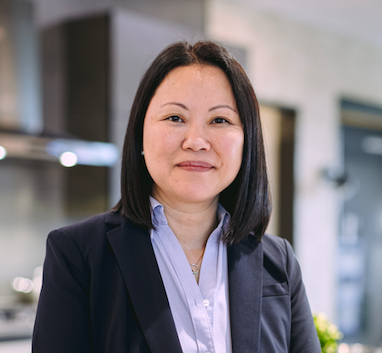The new normal for post-pandemic classrooms continues to be a mixed bag. There was a ton of learning loss and missed experiences, especially when it came to hands-on lab time. At the same time, there was a surge of teacher innovation, student agency, and new remote tools and processes to compensate.

For the past 13 years, Ann Woo, Head of Corporate Citizenship at Samsung, has been paving the way for students at US public middle and high schools to embark on solving real-world problems with STEM-based solutions through Samsung’s Solve for Tomorrow national STEM competition. This year’s contests concluded with three national winners who created inspiring STEM solutions tackling their community issues of pollinator collapse, veterans’ PTSD and heat stroke in sports. Their projects should be an inspiration for any STEM educator. Click through for the whole conversation. Below are some edited highlights:
ESN: How has the topic and mission of STEM changed post-pandemic?
AW: During COVID, it was really challenging for students to deeply engage in STEM classes—there was no lab period or any hands-on engagement quite in the same way. Virtual lab time and real lab time, hands-on learning was a very different paradigm for them. And so teachers have really had to make up for that time in different ways.
We know a lot about the sort of learning gaps that took place, especially in hard subjects. But we also know that students still have a passion for them. And there are a lot of new techniques and ways to realize STEM in non-textbook ways that really capture the real-life application of STEM that draws them into the “how”, which is the subject matter that they need to learn to make a difference.
ESN: How do you take the idea of Project-Based Learning (PBL) and STEM and work it into not just those hard subjects that you mentioned, but creating a project that employs all different subject matters?
AW: So our solution working with classrooms around the country is really to highlight the importance of real-life applications or problem-based learning tools into a multidisciplinary approach. We tend to lean into STEM because that’s the genesis of the challenge that we’ve presented, which is to show how STEM could be applied to improve a local issue in your community, a problem that they want to seek to solve.
Part of the beauty of Solve for Tomorrow is that we are a classroom, team-based competition. We recognize that not everyone is going to be a Ph.D. chemist or physicist in the world today. But how great to be in a community, a team of students that are collectively learning and iterating off of each other to really find the root cause of a problem, and solve and advocate and work as a team to find that answer. And so even if you are not a hardcore scientist in your profession and your adulthood, everyone who’s been part of the competition can appreciate the importance of STEM unlock solving problems in a unique way.
ESN: How has the judging process evolved over the years?
AW: Back in 2010, when we started the competition, we knew even back then that video was the way that young people were learning, sharing, and really telling you their own narrative in their lives. A lot of competitions were still doing essays and in-person interviews. We wanted to use a medium that spoke to them. So we’ve always had a video component of competition. Even as new forms of social media have really exploded over the years, this is something that they know.
And that has been consistent over time. What we’ve really seen as the technology evolves, is how they’re integrating it into their solutions. So there are still projects that use data analysis—they put it in a program like Excel, and they generate something out of it. But from a solution base, we’re seeing some amazing things. We see people building apps as a form of communication…we’ve seen the integration of things like augmented reality, artificial intelligence, which has really integrated itself in some incredible ways.
ESN: So now for our readers and our listeners who are wondering how they can participate in this context next year, give us give us their first steps.
AW: The great part of completing our 13th years that were already prepping for our 14th year, which will start in the fall: Come and enter your idea. The process is just a fantastic experience to meet other classrooms, to hear about topics of importance for them that could inspire your classroom. The whole process really advances that idea of giving voice and power to young people in an empathetic way that drives further knowledge.
Related:
Why STEM is more important for students than ever
- Meet the Winners—Dr. Kellie Wilks, Chief Technology Officer, of Ector County Independent School District, TX (ECISD) - April 12, 2024
- Meet the Winners—Prince William County Public Schools (PWCS) in Manassas, Virginia wins the 2024 Community Leadership Award for Digital Equity. - April 12, 2024
- #CoSN2024 Conversation – Tom Ryan Co-Founder K-12 Strategic Technology Advisor Group (NM) - April 10, 2024

